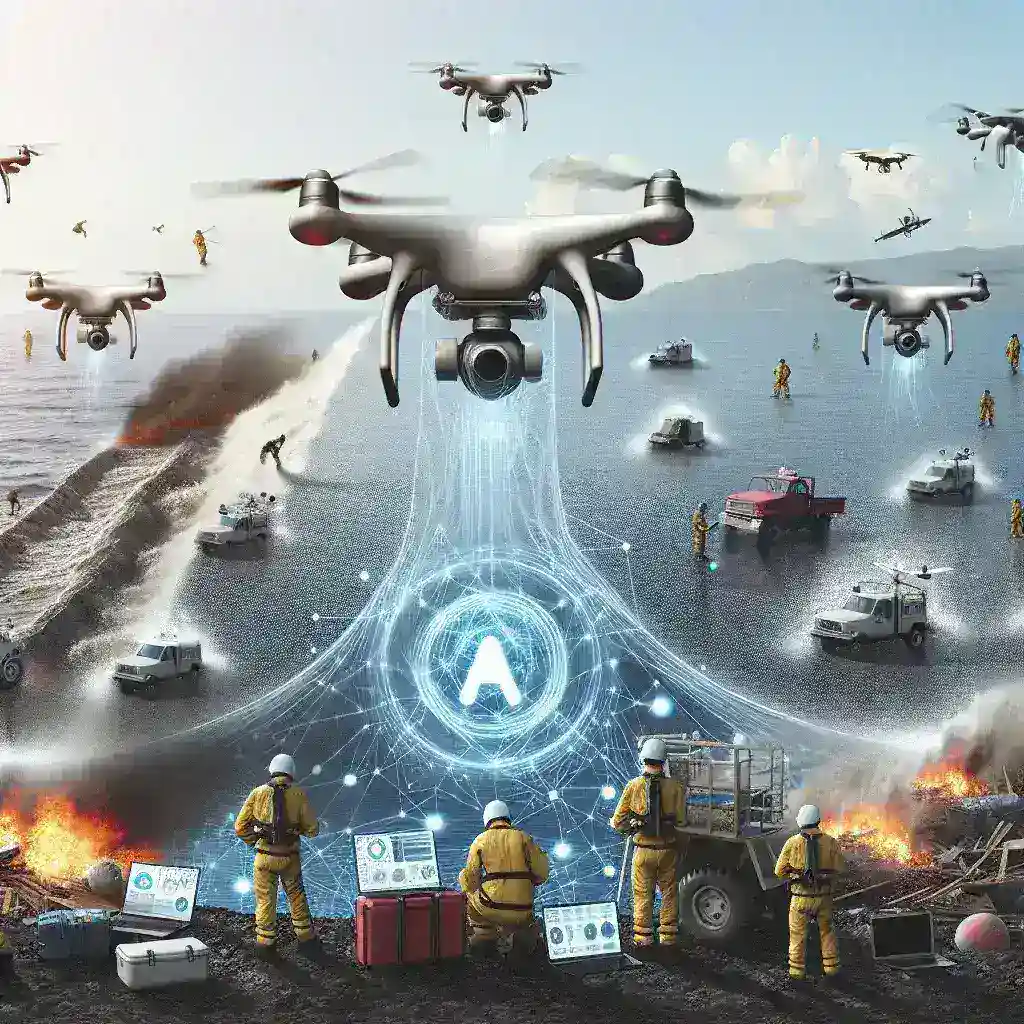Introduction
Natural disasters have always posed significant challenges to societies worldwide. With the increasing frequency and intensity of disasters such as hurricanes, earthquakes, and wildfires, it is imperative to enhance our disaster response and management capabilities. Artificial Intelligence (AI) is emerging as a critical tool in this arena, providing timely, efficient, and effective solutions for predicting, preparing for, and mitigating the impact of these events.
The Importance of AI in Disaster Management
AI’s ability to process vast amounts of data at high speeds makes it invaluable in disaster management. From predicting disasters to coordinating relief efforts, AI can significantly improve the efficiency and effectiveness of every stage of disaster response. Here are some fundamental ways AI is revolutionizing disaster management:
- Predictive Analytics: AI algorithms can analyze historical data to predict the likelihood of future disasters. For example, machine learning models can forecast the trajectory of hurricanes or anticipate seismic activity, providing critical time for preparations.
- Early Warning Systems: AI-powered early warning systems can detect anomalies and alert authorities and the public before disasters strike. This timely information can save lives and reduce property damage.
- Real-time Damage Assessment: Drones equipped with AI technology can assess damage in real-time, allowing for a quicker and more accurate deployment of emergency services.
- Resource Optimization: AI can optimize resource allocation during disaster response, ensuring that aid reaches the areas most in need swiftly and efficiently.
- Communication and Coordination: AI can enhance communication and coordination among different agencies and organizations involved in disaster response, leading to more streamlined operations.
Applications of AI in Disaster Response
1. Predictive Analytics
Predictive analytics involves using AI algorithms to analyze historical data and predict future events. In disaster management, this capability is crucial for forecasting natural disasters such as earthquakes, hurricanes, and wildfires. By identifying patterns in historical data, AI can provide early warnings and allow authorities to take preventive measures.
2. Early Warning Systems
AI-powered early warning systems are designed to detect signs of impending disasters. For instance, AI can monitor seismic activity and provide early warnings of potential earthquakes. Similarly, AI can analyze weather patterns to predict hurricanes and issue timely alerts, giving people more time to evacuate or take necessary precautions.
3. Real-time Damage Assessment
In the aftermath of a disaster, rapid damage assessment is critical for effective response. AI-equipped drones can capture aerial images of affected areas, and machine learning algorithms can analyze these images to assess the extent of the damage. This real-time assessment allows emergency services to prioritize areas that require immediate attention.
4. Resource Optimization
AI can optimize the allocation of resources during disaster response. By analyzing data on disaster impact and available resources, AI can recommend the most efficient distribution of aid, medical supplies, and personnel. This optimization ensures that resources are utilized effectively and reach the areas most in need.
5. Communication and Coordination
Effective communication and coordination are essential for successful disaster response. AI can facilitate better coordination among various agencies and organizations involved in disaster management. For example, AI-powered platforms can integrate data from multiple sources and provide real-time updates to all stakeholders, ensuring a unified and efficient response.
Case Studies
Case Study 1: Predicting Earthquakes with AI
In Japan, researchers have developed an AI model capable of predicting earthquakes by analyzing seismic data. The AI system uses machine learning algorithms to identify patterns in seismic activity, providing early warnings of potential earthquakes. This technology has improved the accuracy of earthquake predictions and allowed authorities to take proactive measures to minimize damage.
Case Study 2: Hurricane Forecasting with AI
The National Oceanic and Atmospheric Administration (NOAA) in the United States has implemented AI technology to enhance hurricane forecasting. By analyzing vast amounts of meteorological data, AI models can predict the trajectory and intensity of hurricanes with greater accuracy. This improved forecasting has enabled better preparation and response efforts, reducing the impact of hurricanes on affected communities.
Case Study 3: AI-Powered Disaster Response in Wildfires
In California, AI algorithms are being used to predict and manage wildfires. By analyzing environmental conditions, weather patterns, and historical data, AI can predict the likelihood of wildfires and identify areas at high risk. Additionally, AI-equipped drones are deployed to monitor fire progression and assess damage in real-time, aiding firefighting efforts and ensuring a more effective response.
Challenges and Future Directions
While AI offers numerous benefits for disaster management, there are also challenges to its implementation. One significant challenge is the availability and quality of data. AI models require vast amounts of accurate data to make reliable predictions and assessments. Ensuring data accuracy and accessibility is crucial for the effectiveness of AI in disaster management.
Another challenge is the integration of AI with existing disaster management systems. Developing seamless interfaces between AI technologies and traditional systems requires significant investment and coordination.
Looking forward, the future of AI in disaster response is promising. Advances in technology and increased collaboration among stakeholders will drive the development of more sophisticated AI models and applications. Continued investment in research and development will enhance the ability of AI to predict, respond to, and mitigate the impact of natural disasters.
Conclusion
AI is transforming disaster response and management by providing innovative solutions for predicting, preparing for, and mitigating the impact of natural disasters. From predictive analytics and early warning systems to real-time damage assessment and resource optimization, AI’s capabilities are revolutionizing the way we respond to disasters. As technology continues to advance, AI will play an increasingly vital role in enhancing disaster resilience and ensuring more efficient and effective disaster management strategies.

